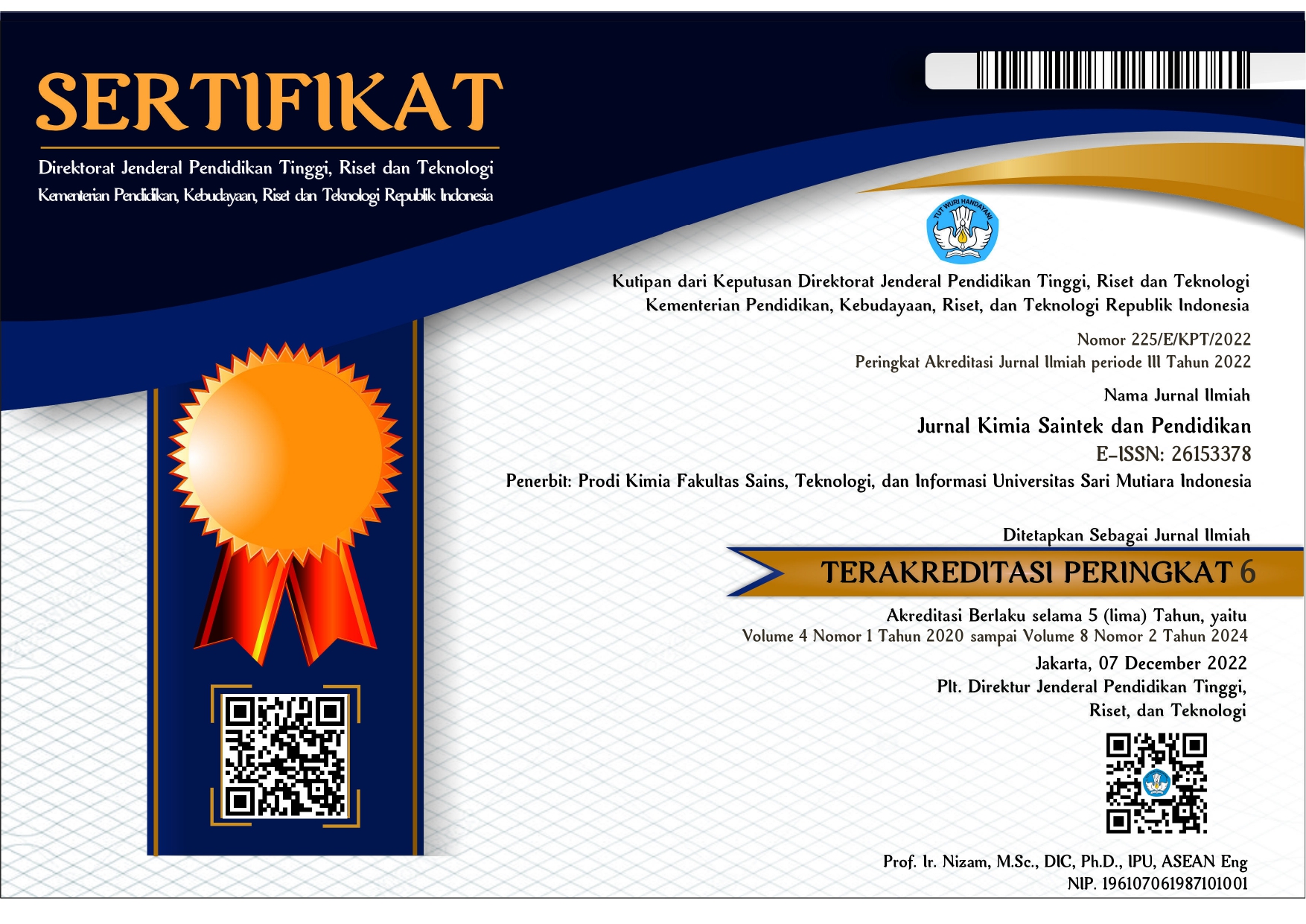PEMANFAATAN LIMBAH KULIT NENAS DAN AMPAS TEBU SEBAGAI BAHAN DASAR DALAM PEMBUATAN KERTAS MENGGUNAKAN BAHAN PENGIKAT PATI LIMBAH KULIT PISANG KEPOK
Keywords:
Pineapple leather waste, Sugarcane bagasse, Kepok banana leather waste, Paper, CellullosaAbstract
This article explains about utilization pineapple leather waste and sugarcane bagasse as a basic material in manufacturing of paper using binder of starch kepok banana leather waste. The research objective is to determine the optimal composition manufacturing of paper from pineapple leather waste and sugarcane bagase with a variation of 80:20% and 70:30% using the alkalization separation method. Based on the results of research that has been carried out, the optimal composition between pineapple leather waste and sugarcane bagasse is 80:20%. The temperature and heating time, and the optimum NaOH concentration is 110 oC for 80 min with sodium hydroxide solution concentration of 2.5%, a pulp content of 74.26%, cellulose content of 84.18%, lignin content of 15.82% and a moisture content of 2.2%. All levels obtained have met the requirements of SNI 14-0444-1989 test for cellulose content, SNI 14-0492-1989 test for lignin content, and SNI 287: 2010 test for moisture content. Based on FT-IR spectrum analysis, pineapple leather waste and sugarcane bagasse are can be used as raw material for manufacturing of paper because of cellulose. This is indicated by the appearance of hydroxyl groups, pineapple leather and sugarcane bagasse which were observed at wave number 3320 cm-1. which shows the presence of cellulose. Based on SEM analysis, it shows that the surface structure of the morphology is getting tighter, it proves that the diameter of the resulting fiber is very small, because the smaller the diameter of the fiber, the better the mechanical properties. Based on the results of grammatical tests, the effect of sodium hydroxide solution concentration and starch binder can improve the mechanical properties, such as tensile index, crack resistance, and tear index. Pineapple leather waste and sugarcane baggase can be used as an alternative raw material to replace wood in manufacturing of paper.









 This work is licensed under a
This work is licensed under a 

.png)

